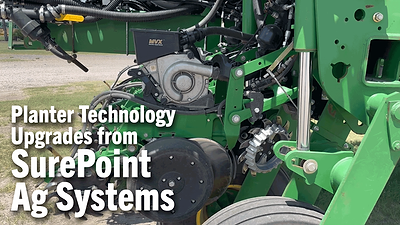Is it a tool or is it a toy? Since unmanned aerial vehicles (UAVs) became widely available and commercially accessible a few years ago, a lot of precision farming dealers and their customers have struggled with how to use the technology, looking for ways to harness the potential insights and opportunities they offer.
When determining whether or not you want to offer UAV services through your dealership, here are 3 things to consider.
1. Scouting
Flying a UAV to scout fields is perhaps the most obvious use, both as an in-season management tool and a complement to making field scouting more accurate, efficient and effective. According to Ed Pollock of SDG Ag Services, many have found that UAVs let them find the troublespots in their fields faster.
“Customers spend less time walking the field and are able to do some prescription-based fertilizer treatments based on the imagery,” he says. “Imagery can also be useful in crop insurance disputes, as it will be more accurate than an estimate based on a 50-foot plot scouted in the field.”
2. Billing
For dealers who have gone the route of selling UAVs and offering imaging services, the big question centers on how much to charge. What’s the best way to bill: Per acre? Per flight? Per hour? You’ll need to define what you’re offering to determine how to charge for your services to be both affordable to customers and competitive in the market.
3. Technology
Not all remote sensors and cameras are made the same, so it’s important to research your options. While some cameras are high resolution, many are not and won’t give you the level of detail you’re looking for.
The software used to stitch images together has gotten better but also still has some limitations. An overarching goal of using UAVs is to come away with predictive analytics but the technology is still being developed.
Using UAVs to generate reliable data is still a relatively young field in the agriculture sector but offers a lot of potential, especially when combined with other intelligence such as yield maps. Cory Engen, ag data specialist with Crystal Valley Co-op, says that one problem is that instead of having specific measurements they’re trying to capture, a lot of ag companies are still trying to figure out what to measure.
The future of UAVs will continue to develop as long as the sensors provide meaningful information.






